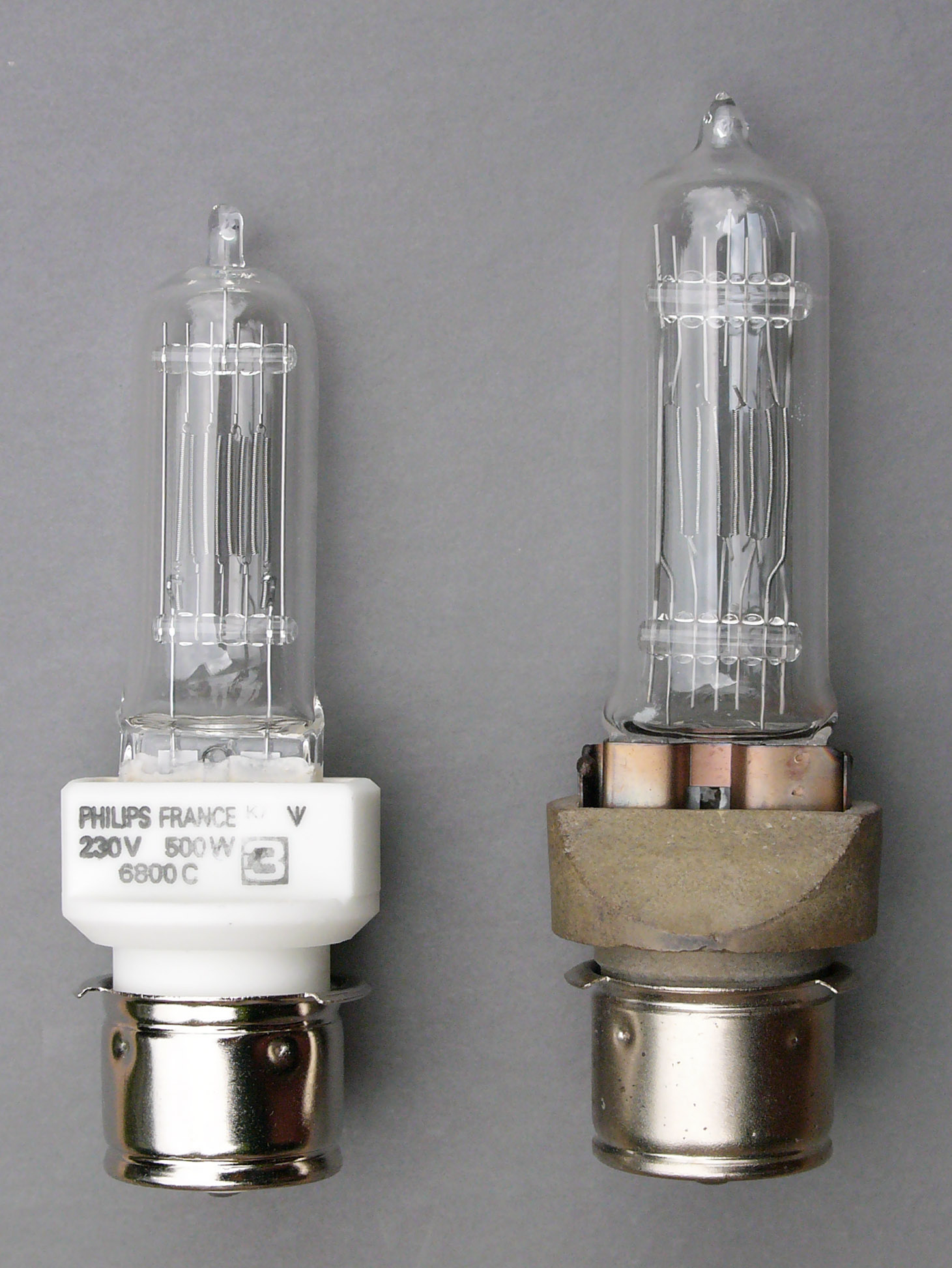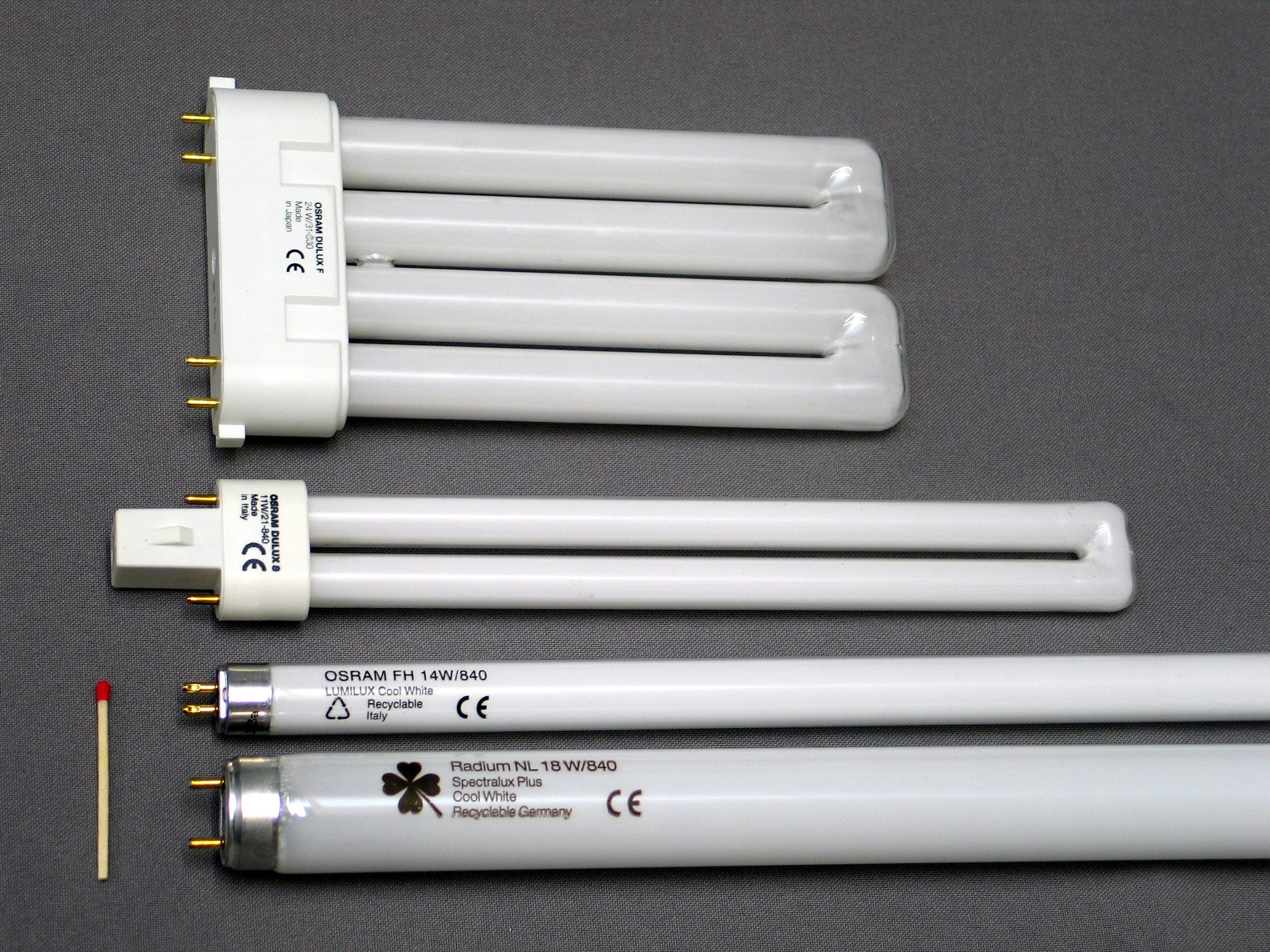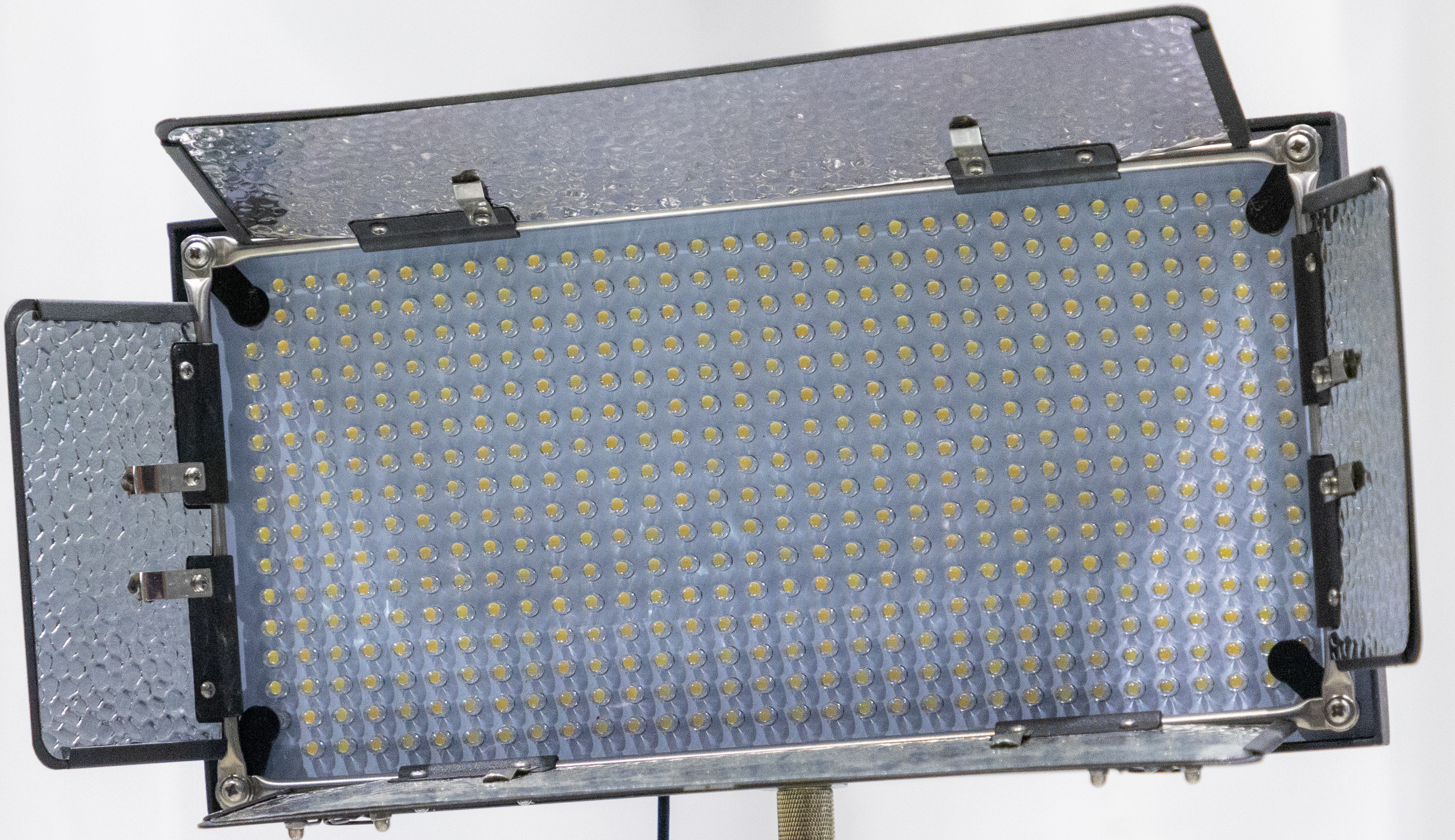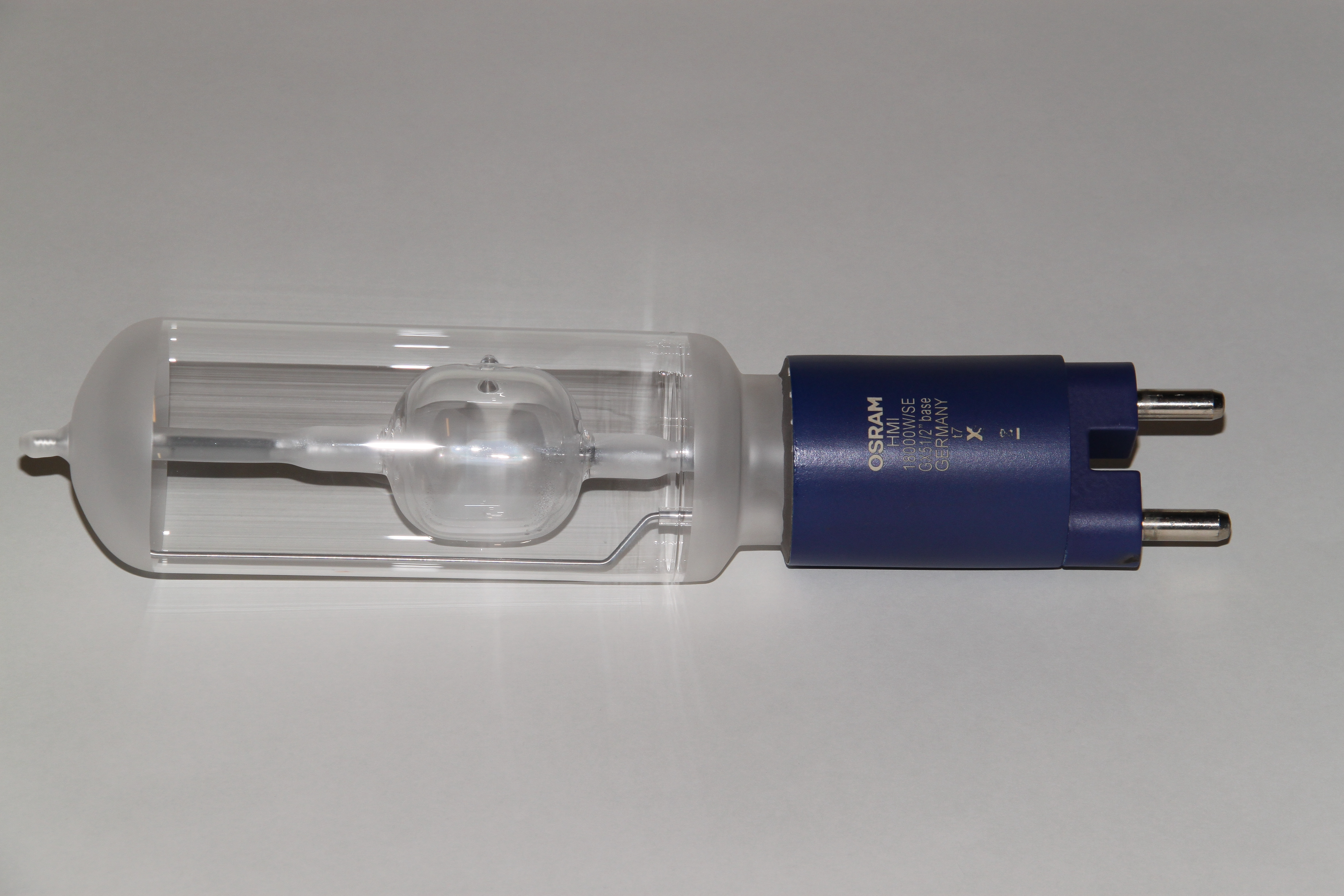9.2: Types of Lamps
- Page ID
- 128695
Lamps
Lamps are the types of bulbs that are used in a given lighting instrument. There are four major types of lights which we will discuss below.
Incandescent
Incandescent lights are sturdy and powerful lights that are most commonly used for video production (See Figure 9.2.1). If the light is too bright, you can use one of the many light modifiers we will discuss later in this section. Dimming rarely works on these lamps because their color temperature will change. If you attach a dimmer to these lights, you will only be able to dim them at 20% maximum before the color temperature changes noticeably.

Although these lights are reliable and powerful, they can be electricity hogs, which means care must be taken to not blow a fuse on set. Most homes can handle two of these lights on a 15-amp circuit or three lights on a 20-amp circuit. The other safety consideration for these lights is their temperature during use. After a minute or two of being on, these lights get very hot. Thick working gloves must be worn to focus these lights when they are in use and to break them down.
Fluorescent

Fluorescent lights are great lights that give off general illumination over a wide area because they are tube lights (See figure 9.2.2). Not all fluorescent lights are made the same. There are consumer-grade fluorescent lights and professional-grade fluorescent lights. Consumer-grade lights are common in office buildings and in classrooms, but are not usually bright enough and have variable color temperatures. Professional grade fluorescent lights are very bright and have a consistent color temperature. The only downside to these lights is their weight. They can be very heavy.
LED (Light-Emitting Diode)

LED lamps have recently become very popular in many kinds of lights because they use less electricity, are usually easier to carry, and do not get as hot as other lamps (See figure 9.2.3). These lamps can be dimmed without affecting the color temperature and the color temperature itself can be changed on many lights. You can find cheap LED lights online and it may be tempting to buy them, but you have to be careful about how bright they are and whether their color temperature is accurate. Students have taken LED lights to sets because they were lighter and could run on batteries, but found out that they were not powerful enough to light what they needed.
HMI (Hydrargyrum Medium-Arc Iodide)

HMI lamps are a sub-set of high-intensity discharge lamps (See figure 9.2.4). They are commonly used by professional productions because cinematographers like the quality of light they give off. A benefit of them is that they use less electricity and run cooler than incandescent bulbs, but they are very expensive and usually out of the price range of anyone without a large budget.


